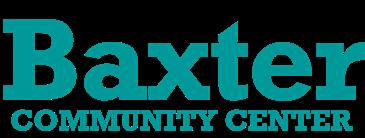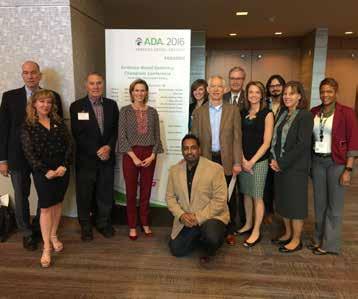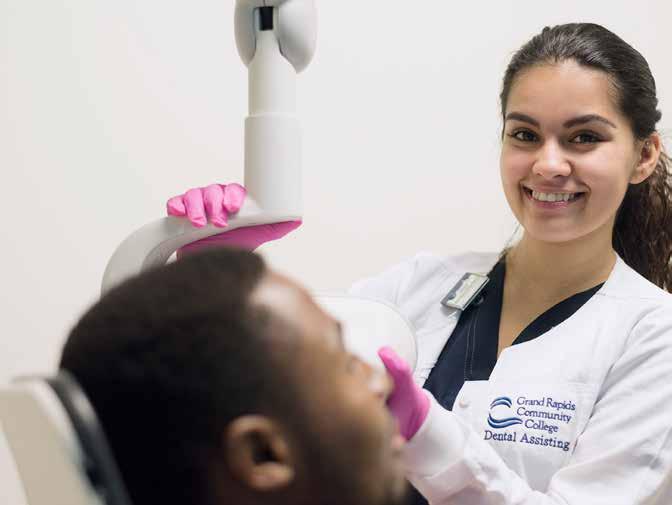EVIDENCE-BASED DENTISTRY
Evidence-Based Dentistry: Learning from a Local Expert
This article reviews the concept of Evidence-Based Dentistry through a review of information from the American Dental Association’s Center for Evidence-Based Dentistry website and through an interview with ADA EBD Practice Award winner, MDA Journal Editor-in-Chief, and local colleague, Dr. Christopher Smiley.
eatment of Chronic Periodontitis by Scaling and Root and Interview byAdjuncts: Rachel Sinacola, DDS, MS h or Article without Clinical Practice Guideline1,2 What is Evidence-Based Dentistry (EBD)?
What are some ways that EBD benefits dentists theirAgainst patients?Against Expert and Opinion
on is based on the best available evidence. The level of evidence available to support each recommendation may differ.
CS: EBD is a patient-centered approach to treatment decisions, which Weak Expert Opinion For provides personalized dental care based on the most current scientific CS: Evidence-based healthcare is the cornerstone for improving care knowledge. The American Dental Association (ADA) defines Evidenceoutcomes and providing patient-centered care. It allows clinicians to based Dentistry (EBD) as “an approach to oral healthcare that requires keep current on topics relevant to the care they provide. EBD is the Strength the judicious integration of systematic assessments of clinically relevant blending of the best evidence/literature with the patient's needs and scientific evidence, relating to the patient’s oral and medical condition desires and the dentist/provider's skills and knowledge. and clinicians history, with theconsider dentist’s clinical expertise and the patient’s eriodontitis, may photodynamic therapy (PDT) using diode lasers as an adjunct Weak treatment needs and preferences.” It provides a systematic approach to sift through the literature to find
the most appropriate evidence for dentists who have a clinical question.
eriodontitis, clinicians should be(EBD) aware the current evidence shows no net benefit from diode Evidence-based dentistry is that the practice of clinical decisionOpinion EBD appraisal skills help assess literatureExpert to determine if it isAgainst valid and RP. making that integrates three components:
1. the dentist’s clinical expertise; 2. the patient’s needs and preferences; 3. and the most current, clinically relevant evidence.
reliable for patient care.
eriodontitis, clinicians should be aware that the current evidence shows no net benefit from Nd:YAG
Expert Opinion Against
EBD welcomes the patient into the process by considering their needs and the care options they desire once they are informed. Clinicians use eriodontitis, clinicians should be aware that the current evidence shows no net benefit from erbium Expertfor Opinion professional judgment to interpret the evidence options Against that address All three are part of the decision-making process for patient care. the patient's needs. Most evidence-based guidelines provide anticipated outcomes for topics presented. For instance, ADA guidelines note that dental sealants reduce the risk of dental decay by 80%. Communicating expected outcomes and tailoring care to those at risk will build confidence for the provider in the care they recommend and promote acceptance of recommended care by patients.
Dentist’s Expertise
EBD Scientific Evidence
Patient Needs & Preferences
Center for Evidence-Based Dentistry™ 16
WEST MICHIGAN DISTRICT DENTAL SOCIETY | HOLIDAY ISSUE 2020
ed. Adapted with permission. To see full text of this article, please go to JADA/ADA.org/cgi/content/ This page may be used, copied, and distributed for the ADA. Any other use, copying, or distribution, whether in printed or electronic format, is strictly prohibited without the prior written consent of the ADA.







